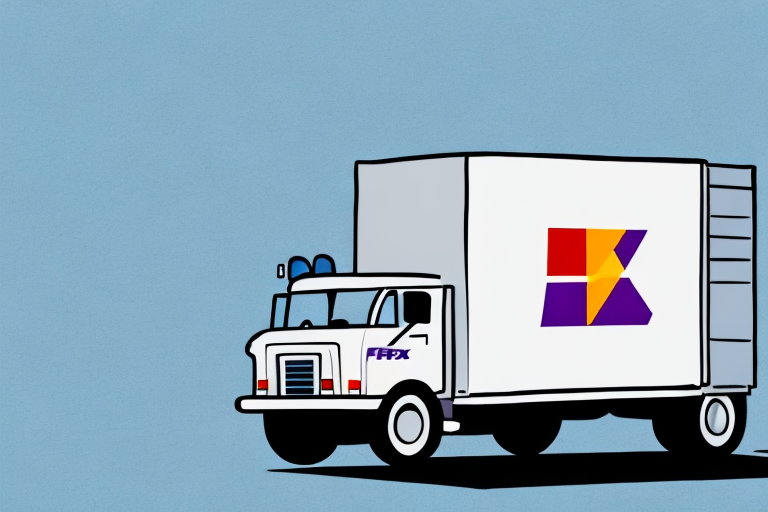Understanding UPS Shipping Rates
When shipping a large package, such as a 100 lb shipment, understanding UPS shipping rates is crucial for budgeting and planning. UPS calculates shipping costs based on several key components, including the weight and dimensions of the package, the distance it travels, the chosen shipping service, and the value of the items being shipped.
Factors Influencing Shipping Costs
- Weight and Dimensions: Heavier and larger packages typically cost more to ship as they occupy more space and require additional handling.
- Distance and Destination: Shipping over longer distances or to remote locations can increase costs due to higher fuel and transportation expenses.
- Shipping Service Type: UPS offers various services, from standard ground shipping to expedited options like Next Day Air. Faster services generally come at a higher price.
- Insurance and Value: High-value items may require additional insurance coverage, adding to the overall shipping cost.
Current UPS Rates Overview
As of 2024, UPS rates have seen adjustments reflecting changes in fuel costs and operational expenses. According to the UPS Service Guide, the cost to ship a 100 lb package can vary significantly based on the factors outlined above. It's essential to consult the latest rates directly from UPS to obtain accurate pricing.
Calculating Shipping Costs with UPS
Accurately calculating the cost of shipping a 100 lb package with UPS involves considering all relevant factors and utilizing available tools.
Using the UPS Shipping Calculator
UPS provides an online Shipping Calculator that allows users to estimate shipping costs by entering package details such as weight, dimensions, origin, destination, and desired service level.
Example Calculation for a 100 lb Package
- Enter the package weight: 100 lbs.
- Provide package dimensions: For instance, 40" x 30" x 20".
- Select origin and destination locations.
- Choose a shipping service, such as UPS Ground or UPS Next Day Air.
- Review the estimated cost provided by the calculator.
Keep in mind that rates may fluctuate based on seasonal demand and fuel surcharges.
Comparing UPS Shipping Services
UPS offers a variety of shipping services tailored to different needs. Understanding the differences between these services can help you choose the most cost-effective option for your 100 lb package.
UPS Ground vs. Air vs. International
- UPS Ground: The most economical option for domestic shipments, typically delivering within 1-5 business days.
- UPS Air Services: Includes expedited options like Next Day Air and 2nd Day Air, ideal for time-sensitive deliveries.
- UPS International: Shipping to over 220 countries with varying delivery times and costs based on destination.
Cost Differences
UPS Ground is generally the least expensive, while air services command higher fees due to faster delivery times. International shipping costs can vary widely depending on the destination country's customs regulations and distance.
Tips for Reducing UPS Shipping Costs
Implementing strategic measures can help you minimize shipping expenses without compromising on service quality.
Optimize Package Dimensions
Reducing the size of your package can lower costs, as UPS uses dimensional weight pricing. Ensure your package is as compact as possible while securely housing your items.
Choose the Right Shipping Service
Selecting a service that aligns with your delivery timeline needs can prevent overpaying for expedited options when standard shipping suffices.
Leverage UPS Discounts and Promotions
UPS offers discounts for high-volume shippers, nonprofits, and businesses that use their online tools. Visit the UPS Business Shippers page to explore available discounts and eligibility criteria.
Efficient Packaging Techniques
Using appropriate packaging materials not only protects your shipment but also ensures that you avoid additional fees related to improper packaging. Utilize sturdy boxes and secure packing methods to prevent damage during transit.
Comparing UPS with Other Carriers
When determining the best shipping option for your 100 lb package, it's beneficial to compare UPS with other carriers like FedEx and USPS.
UPS vs. FedEx vs. USPS
- Delivery Speed: FedEx often matches UPS in delivery speed, especially for expedited services, while USPS may be slower for heavy packages.
- Cost: USPS is typically more cost-effective for smaller packages, but UPS and FedEx may offer better rates for larger or heavier shipments.
- Service Options: All three carriers provide a range of services, but specific features like tracking capabilities and insurance options may vary.
Choosing the Best Carrier for Your Needs
Assess your priorities—such as cost, speed, reliability, and customer service—to determine which carrier best suits your shipping requirements. Utilizing comparison tools on carrier websites can aid in making an informed decision.
Additional Considerations
Beyond basic shipping costs, several other factors can impact your overall shipping experience with UPS.
Insurance and Liability Coverage
Protecting your shipment is essential, especially for high-value items. UPS offers insurance options that cover loss or damage during transit. Review the UPS Insurance Guide to understand coverage limits and terms.
Dealing with Unexpected Fees
Unexpected charges can arise from oversized packages, incorrect addresses, or customs duties for international shipments. To avoid these fees, ensure accurate package dimensions and labeling, and familiarize yourself with international shipping regulations if applicable.
Tracking and Managing Your Shipment
UPS provides robust tracking tools that allow you to monitor your package's journey in real-time. Utilize the UPS Tracking feature to stay informed about delivery status and manage any potential delivery issues proactively.
Best Practices for Preparing Your Shipment
Proper preparation is key to ensuring safe and efficient delivery of your 100 lb package.
Select Appropriate Packaging Materials
Use durable boxes and cushioning materials to protect your items. Reinforce box seams with strong packing tape to prevent breakage.
Secure Your Items Inside the Package
Arrange items to minimize movement within the box, using packing peanuts, bubble wrap, or other fillers as necessary.
Accurately Label Your Package
Include clear and complete addressing information, including any necessary customs forms for international shipments, to facilitate smooth delivery.
By adhering to these best practices and optimizing your shipping strategy, you can ensure that your 100 lb package arrives safely and on time while minimizing costs and avoiding unexpected fees.








